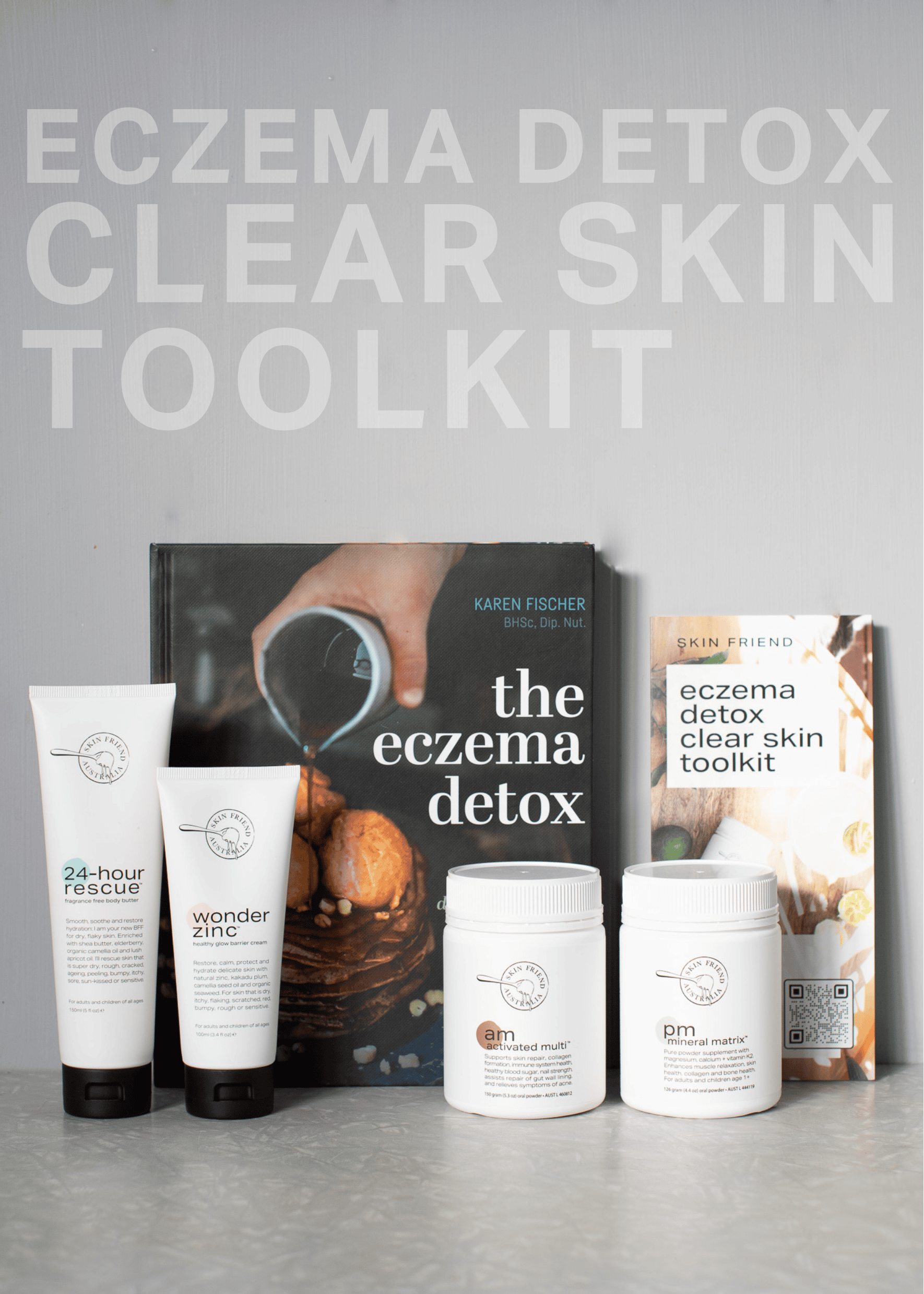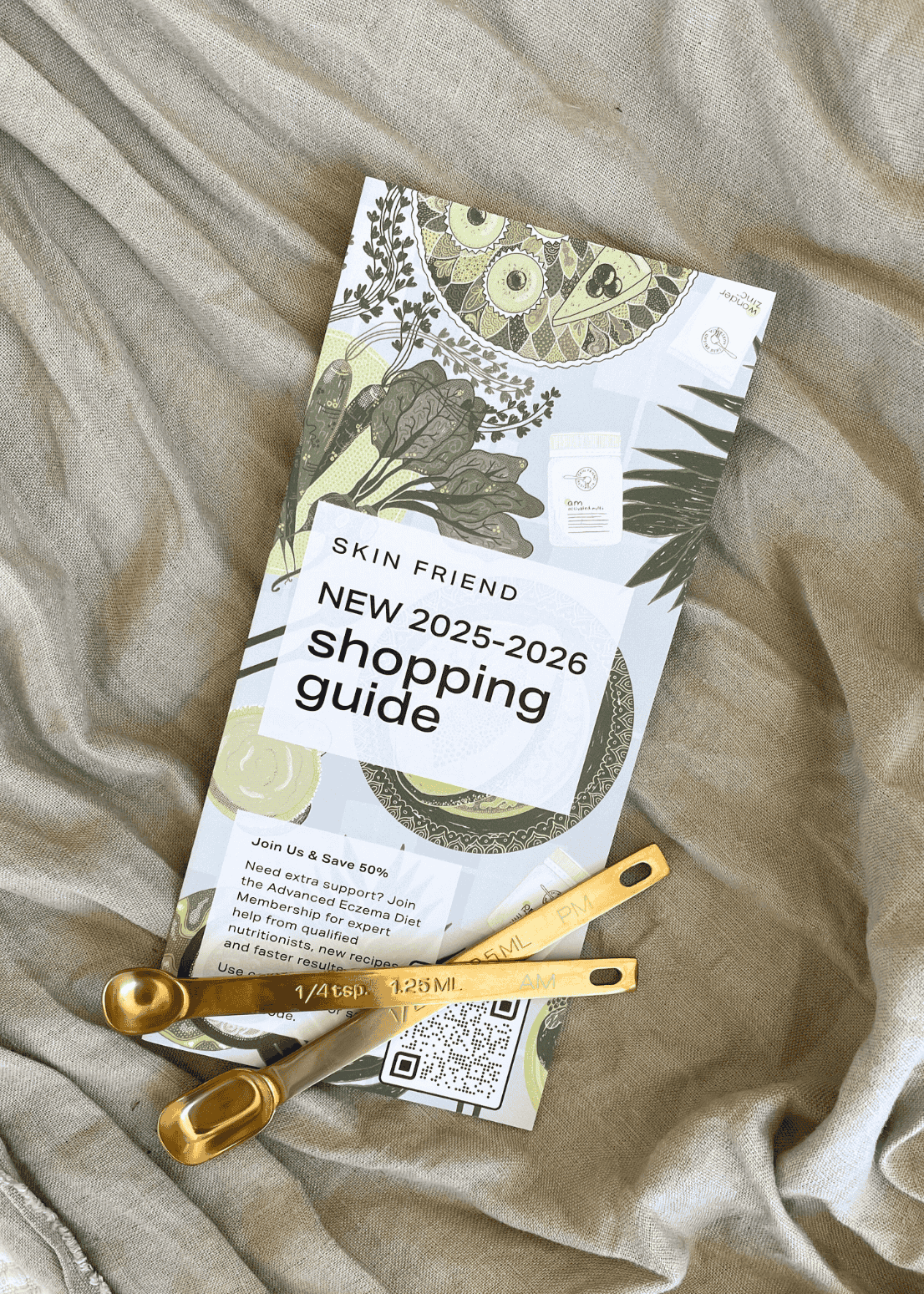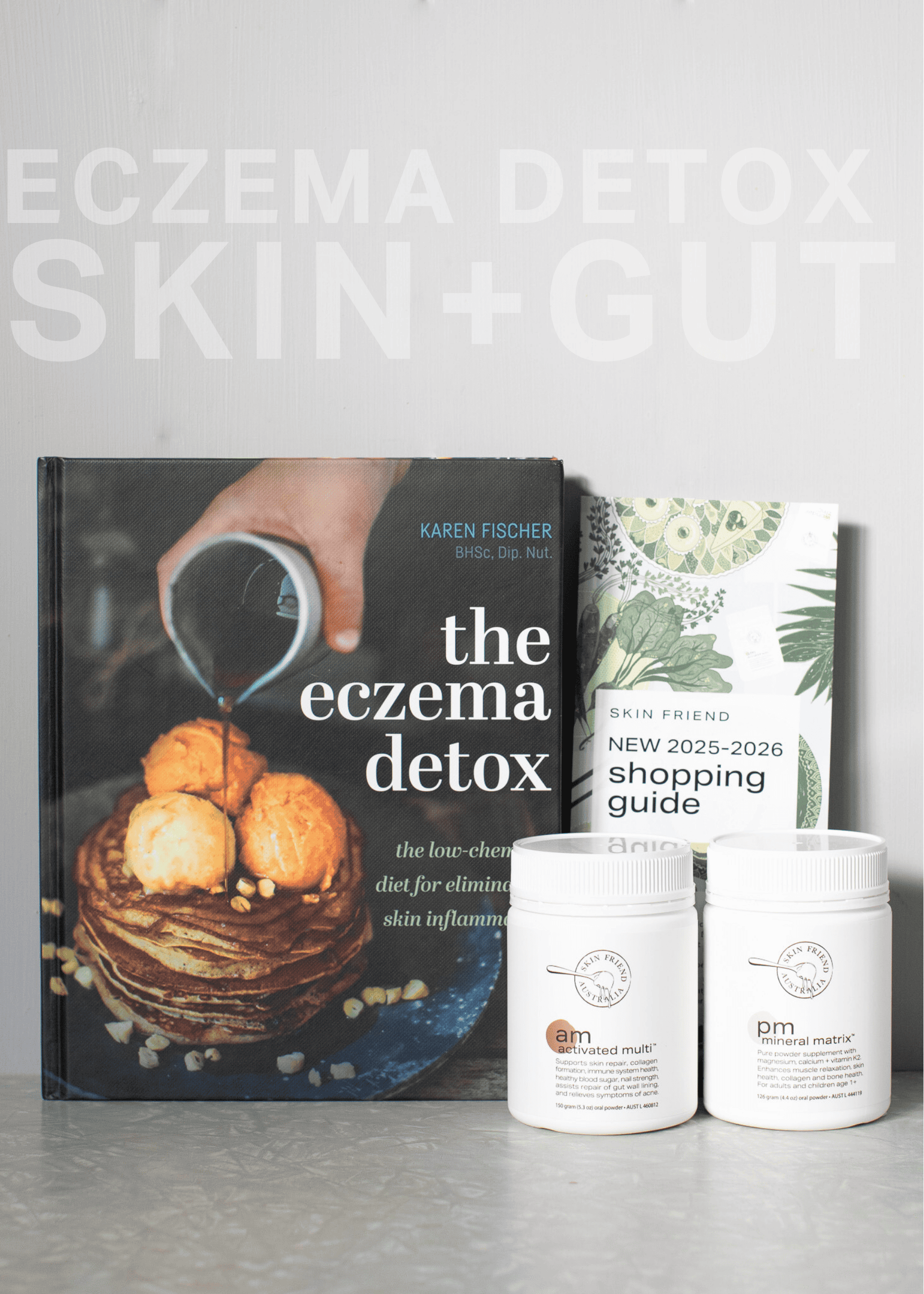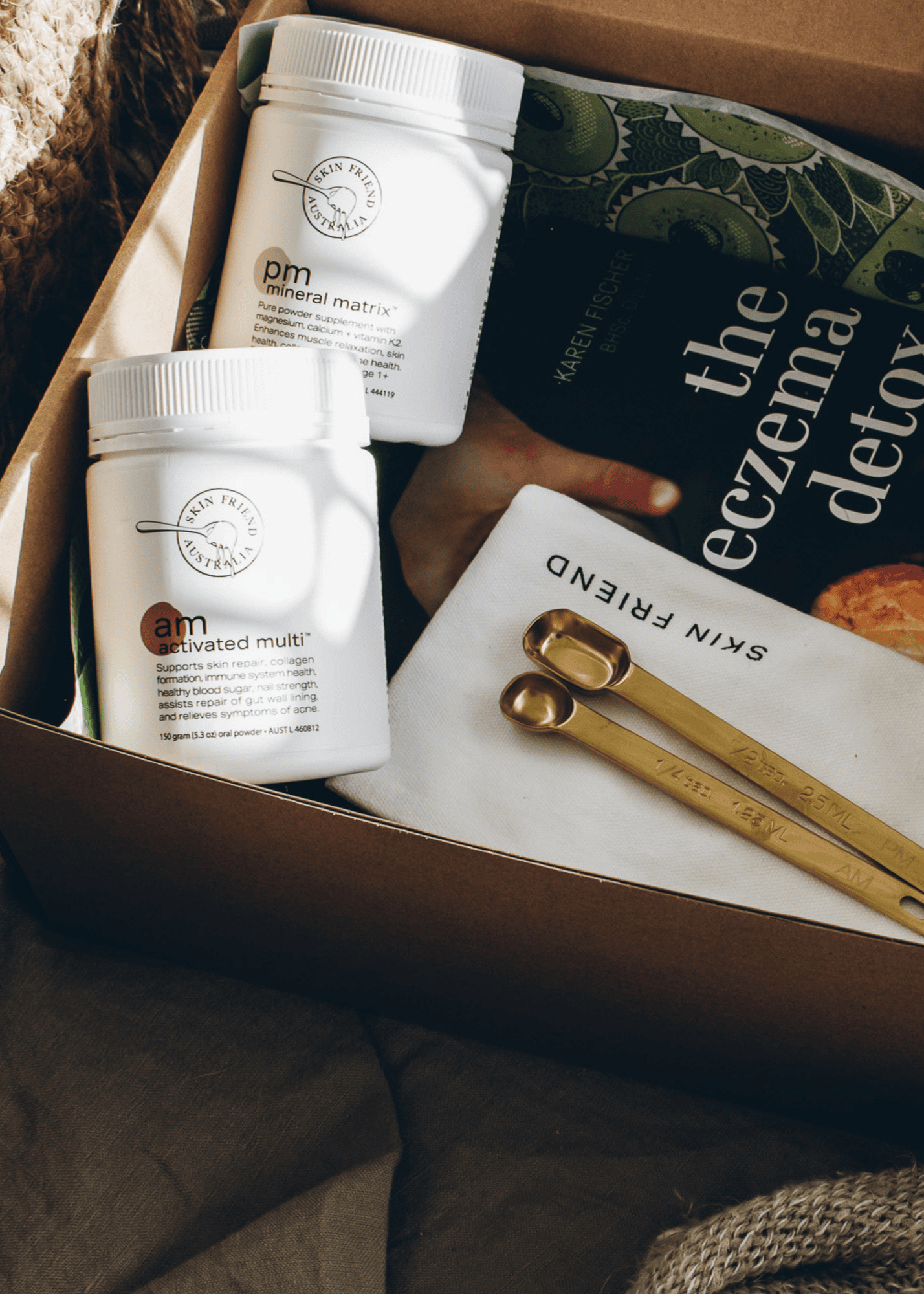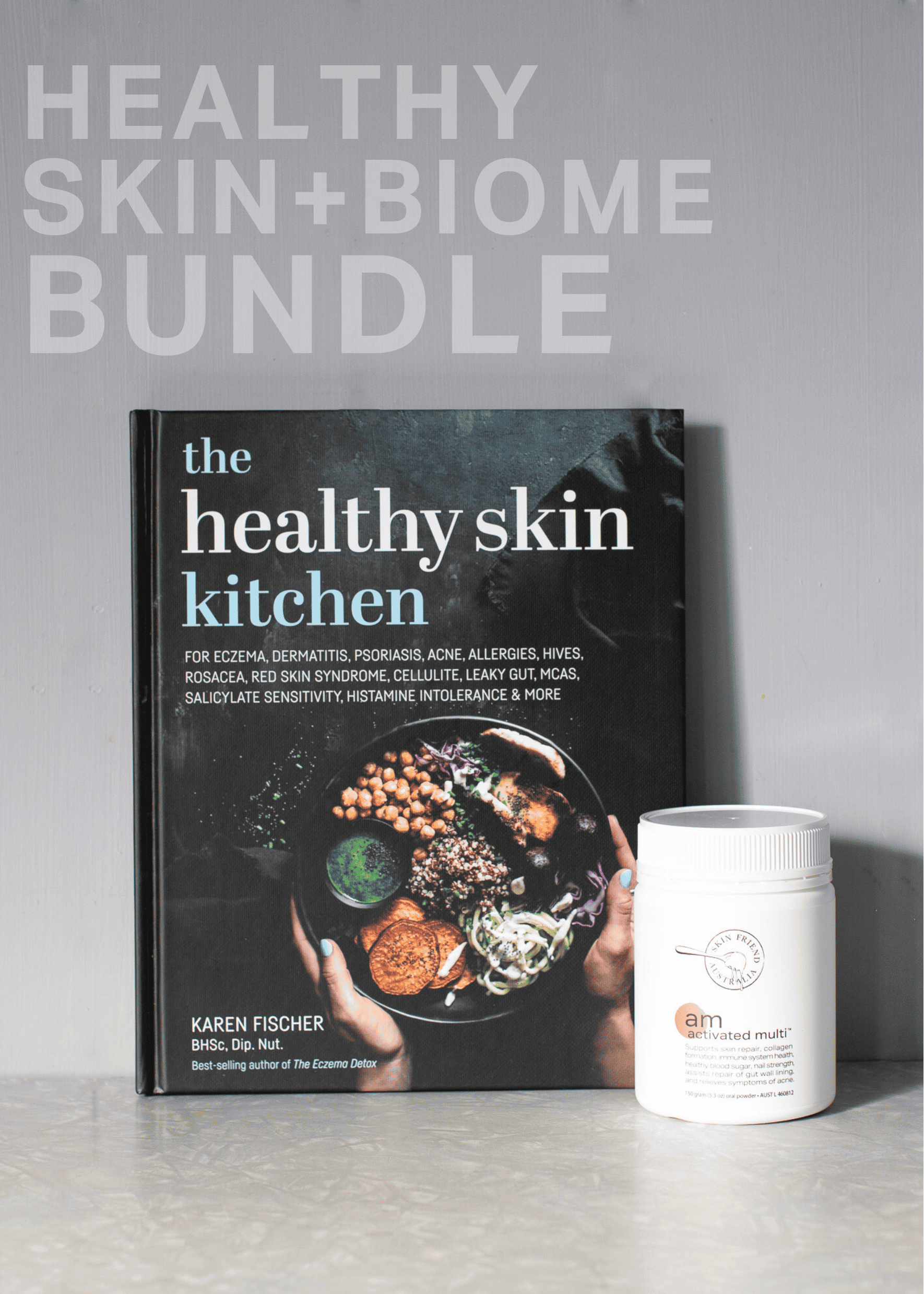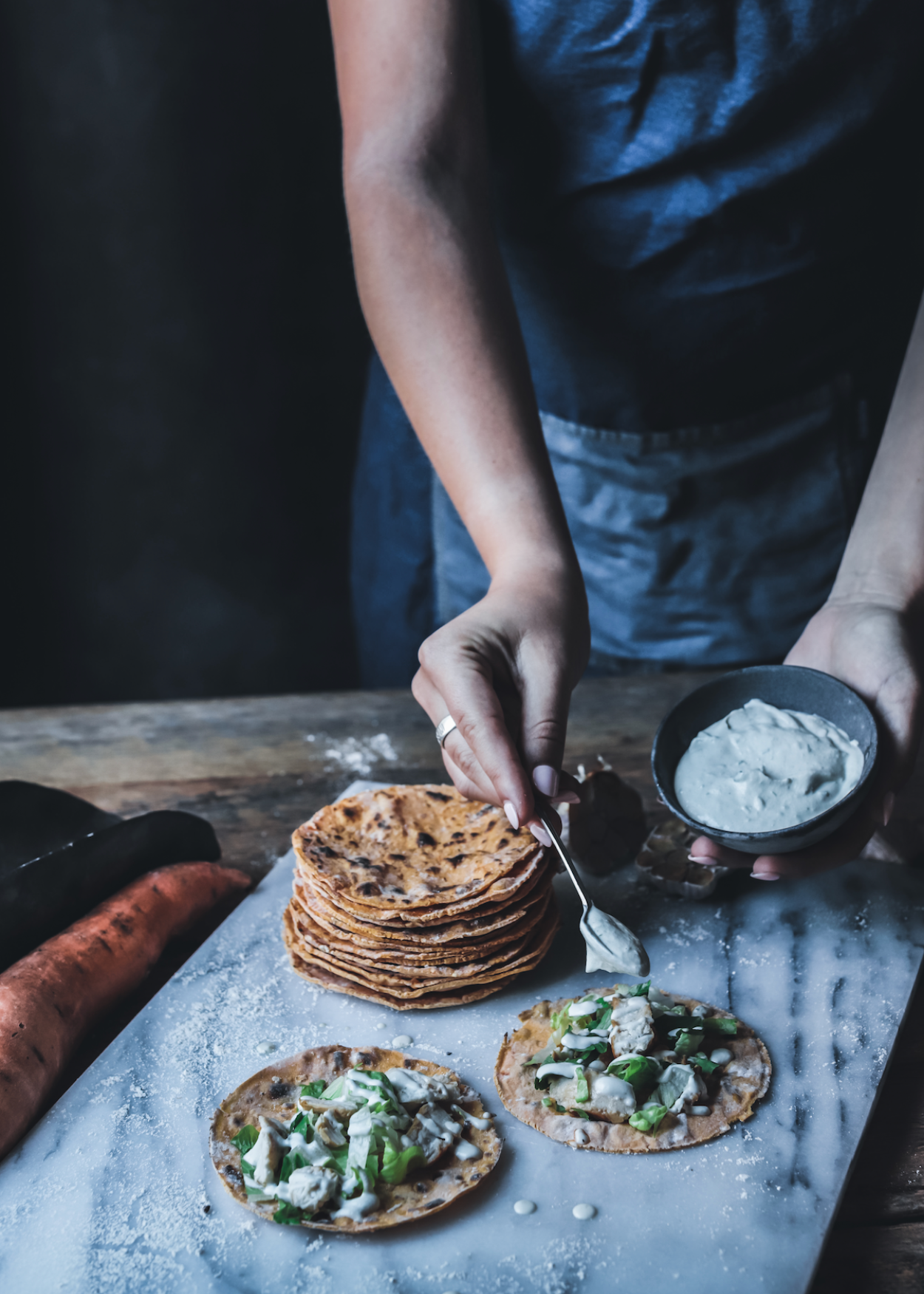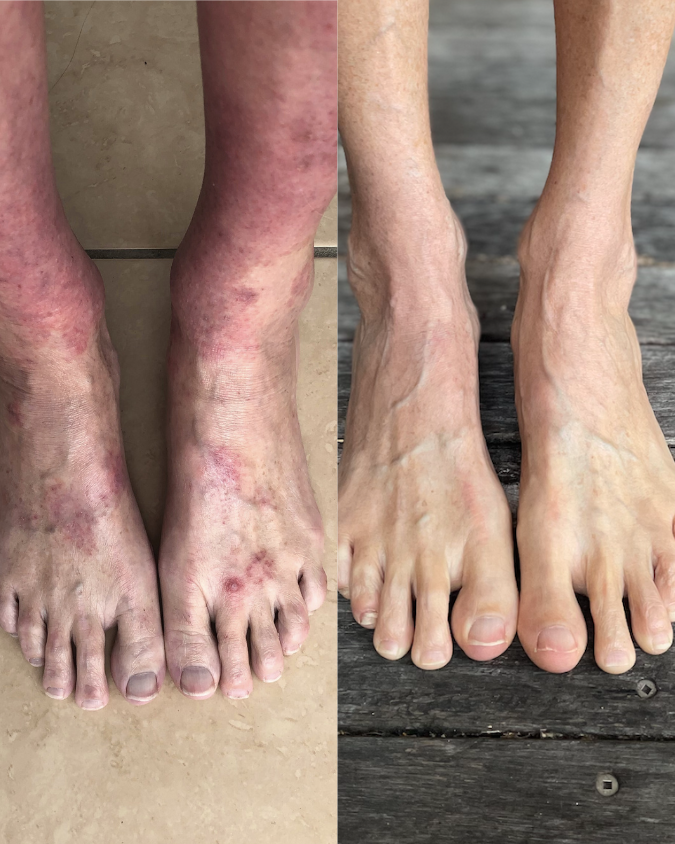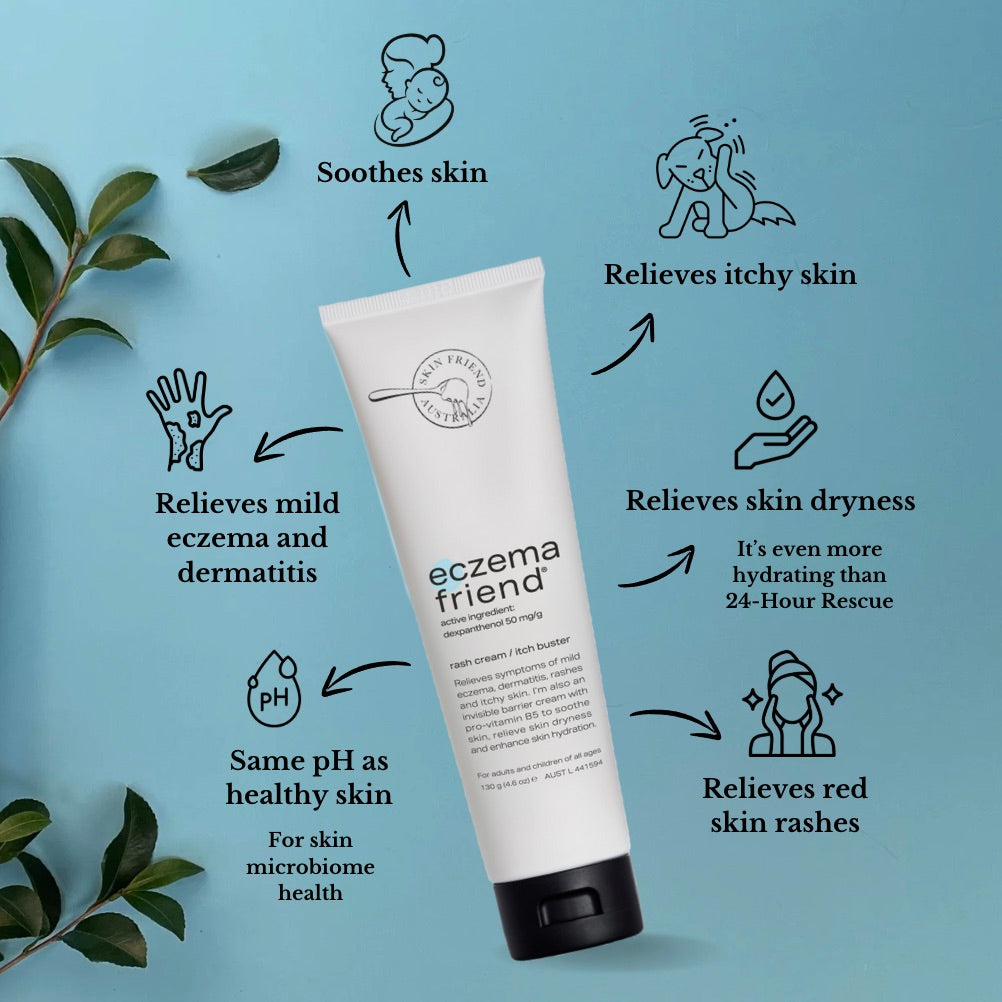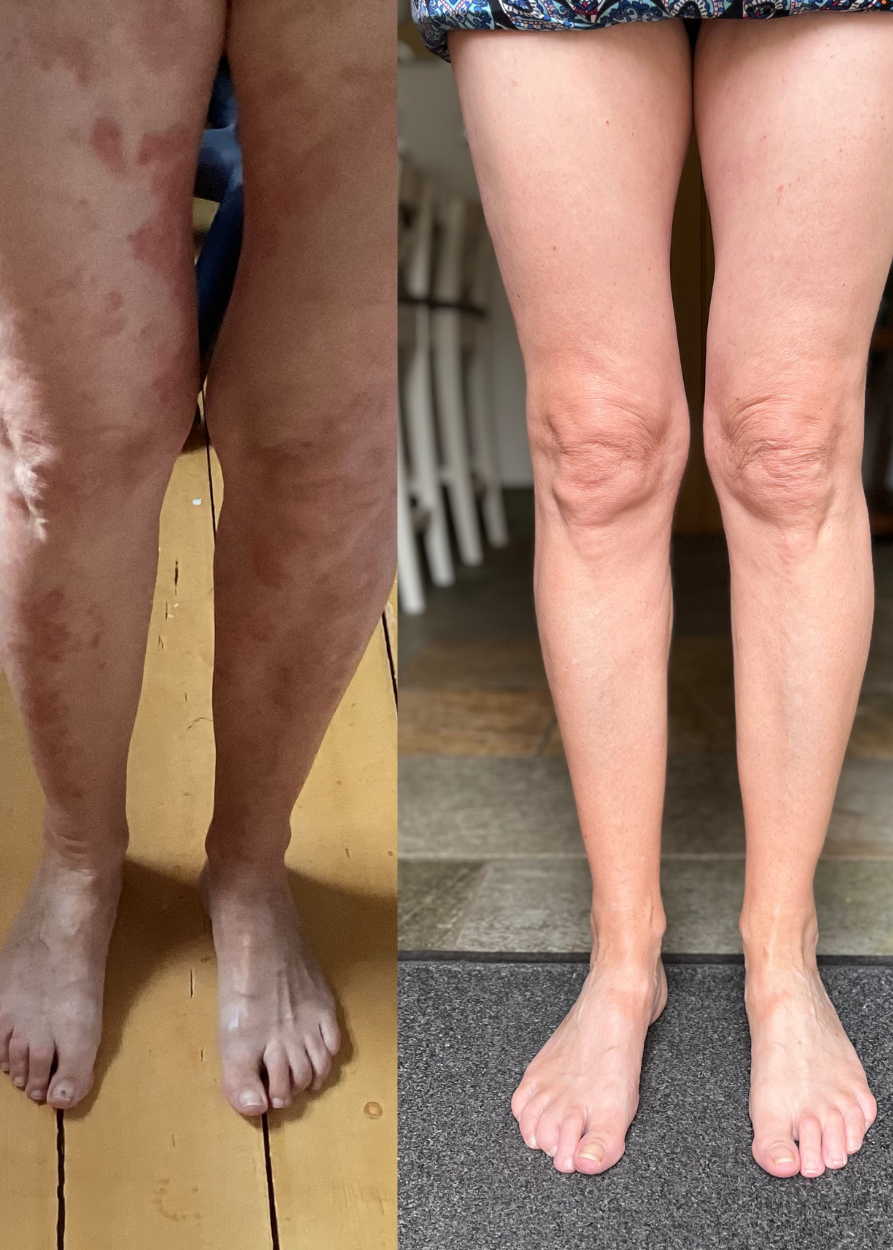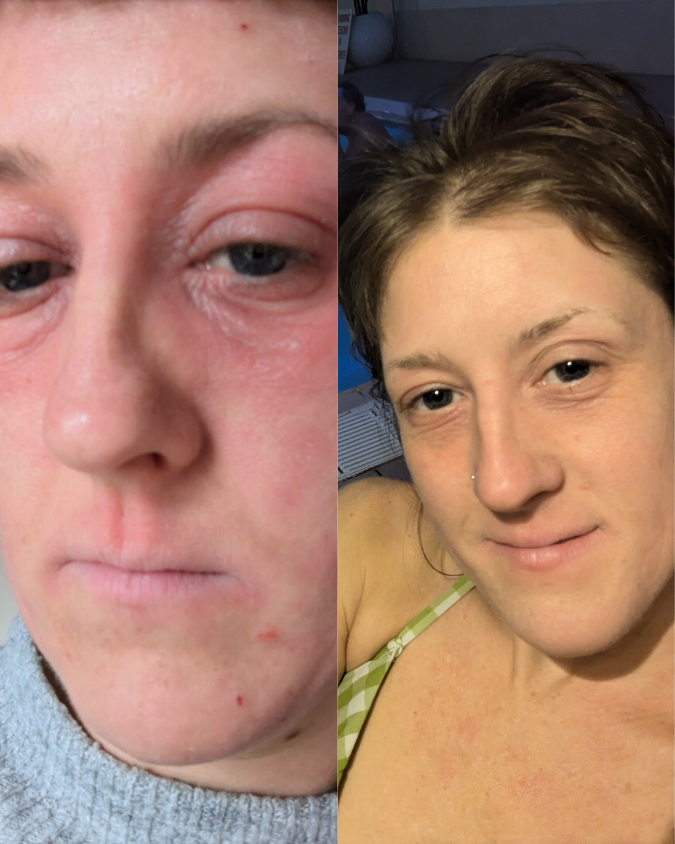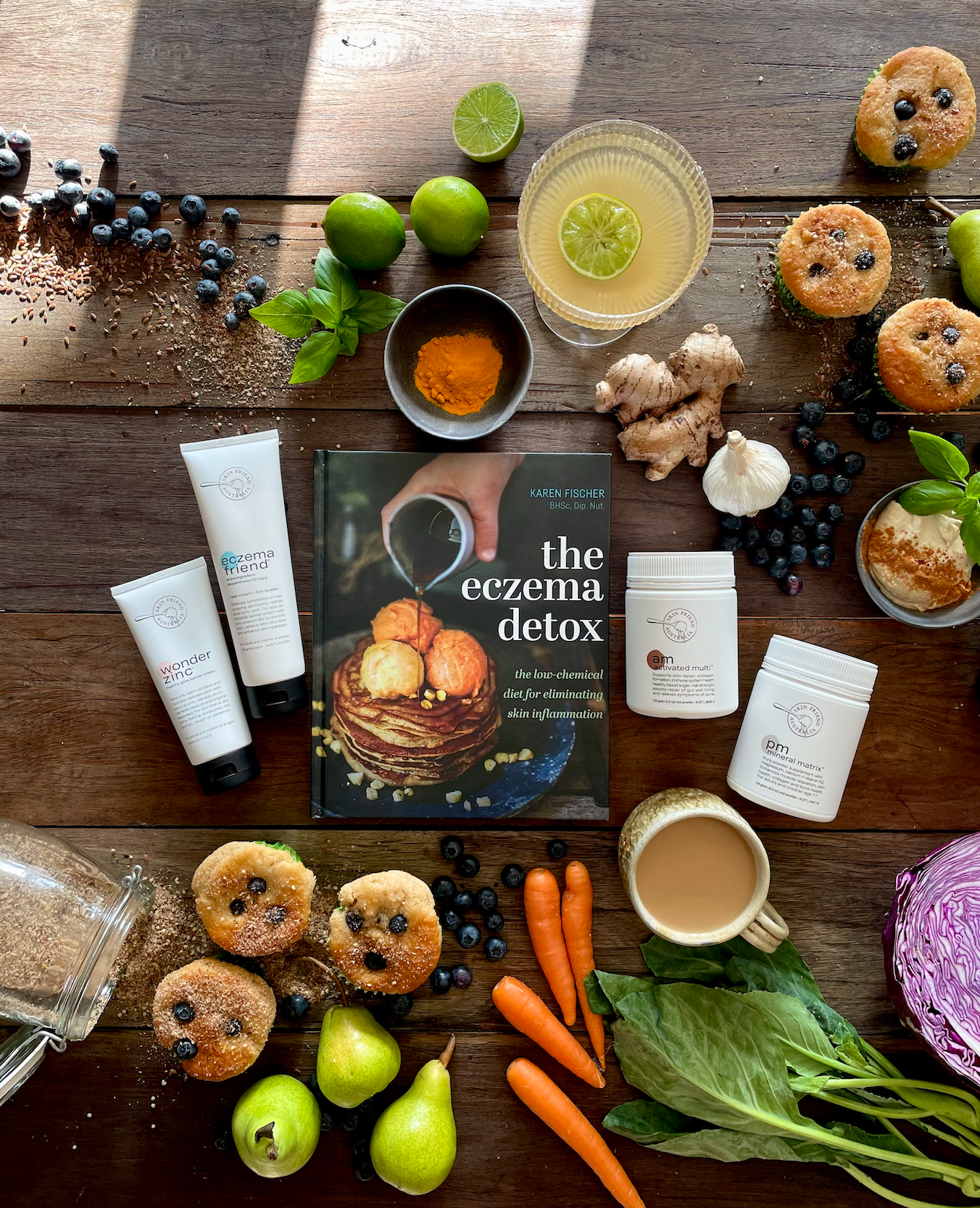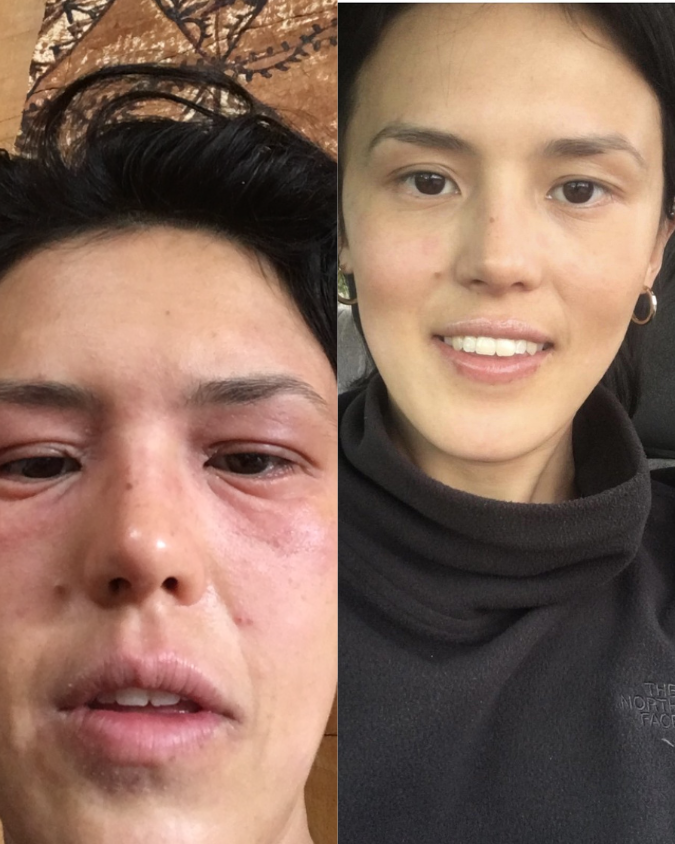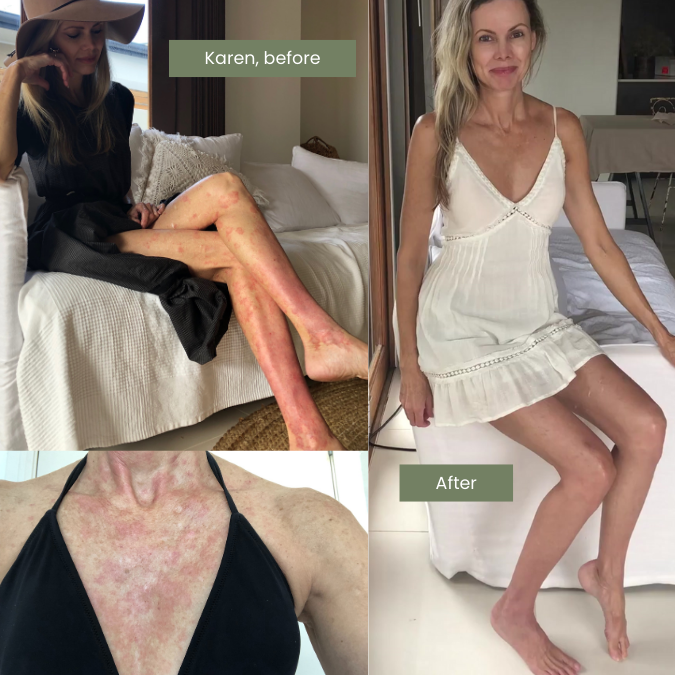
Although I was an ‘atopic kid’, suffering from environmental allergies, hayfever and asthma, growing up I was lucky enough to be free of food allergies or eczema. The first time I experienced eczema was during year 11 and 12 due to stress from school work and it showed its red angry face under my arms. As many eczema suffers out there would understand...it is horrible. However, once the stressful exam periods finished it would go away and vanish from my mind until it returned.
As I got older, I grew out of my day-to-day asthma, with it only effecting me during excessive exercise or in a really bad allergic reaction, or a case of hay fever. However my hay fever and other environmental allergies stuck around like a bad smell. To be honest, I never really took the allergies seriously and just used antihistamines daily to cope. This only served as a band aid, not addressing the underlying issue.
At 21, I commenced a new journey, changing my whole lifestyle and embracing a vegan diet. So naturally, I started to consume more soy products as a replacement for meat and dairy.
About a year into it, I started working at a local cafe, where I was washing dishes constantly. My hands were always either in a sink full of water with harsh dishwashing chemicals, or were getting washed with ‘food grade’ hand wash - again full of chemicals. In addition to this, I was also enjoying a soy hot chocolate at least once a day (as well as everything else I was eating that was soy based!).
It didn’t take long before I ended up with pretty severe, and super painful, eczema on my fingers. It would start out as tiny little blisters, that looked like white heads, which would then pop and ooze out clear liquid. Once they had popped, thats when the itching began. As anyone with eczema probably knows, itching is the worst thing you can do for your skin - but oh is it satisfying in the moment! Of course, the more I itched, more of these white blisters would appear, and then would pop, continuing the cycle. The eczema continued to worsen and I could hardly straighten my fingers because they were so severely painful, dried, cracked, and infected. My skin was so thin and if I moved my fingers the wrong way, my skin would crack and bleed. I would wake up in the middle of the night scratching like crazy and it got to the point where I would shower with plastic bags over my hands and my partner would have to wash my hair, as anything that touched my poor fingers was excruciatingly painful. I even wore socks over my hands to bed at one stage to try and stop the night scratching! I had rings on my fingers that I struggled to get off because of how swollen my fingers were. Holding ice packs over my hands was the only relief that subsided the bone-deep itch and burning sensation.
The photos above don't portray the eczema at its worst. Often my entire fingers would be covered, cracked and oozing.
I knew quite a few people that experienced eczema from constantly having wet hands, so I started reducing the amount of washing up I was doing at work and tried to keep my hands as dry as possible. I applied thick moisturisers and barrier creams but nothing improved the eczema.
Keep in mind, I was still drinking my soy hot chocolates and eating soy products everyday…
I ended up seeing my doctor and of course she prescribed me steroid creams. As common with most eczema suffers, these helped for a few weeks but I’d end up needing something stronger. I haven’t always had a natural, holistic approach when it came to treating my eczema, however I was never comfortable using steroid creams as my Mother would love to remind me "they'll thin your skin sweetie!" Every cream I was prescribed also said 'do not apply to broken skin' so, luckily, I never ended up using steroid creams consistently as my skin was always broken. Every time I saw my doctor, I asked whether it could be related to anything with my diet and she would just give me a stronger prescription and told me ‘it was something I would have to live with and eczema can’t be cured.' This is something I commonly hear speaking to patients suffering from eczema in the Skin Friend community, however when it comes to healing your eczema there is hope with the right information.
Every night before bed I would google ‘hand eczema’ desperate for answers. Often I would read about 'normal' eczema and felt like it didn't describe or even look like what I was experiencing on my hands. One night, I came across a blog that talked about dyshidrotic eczema. Dyshidrotic eczema causes small blisters on the hands, fingers or feet that itch and burn, go away within 2 weeks and leave the skin red, cracked, tight and dry. Everything clicked and I entered a google vortex of dyshidrotic eczema. Finally, every single thing I read explained my eczema as if they were recounting my experience, and photos I were seeing were exactly what my fingers looked like!
The next thing that surprised me was that nickel in foods such a soy beans was a common trigger for dyshidrotic eczema. I remember this moment so vividly and from the next morning I cut out soy products completely from my diet. I had a huge build up in my system, but in just over a week my hands were almost clear. After over a year of intense itching, pain, infection and desperation, I finally felt calm. When I trialed not eating soy I also stopped using steroid creams which really confirmed to me that it was soy causing my issues. My skin was still dry, thin and damaged but I was so amazed at how much difference there was in just over a week - it was truely an eye opening moment. I decided to test my theory and had a soy hot chocolate and within half an hour the itching was back and the next day my fingers had flared again - my partner and I were in shock and couldn’t believe that something so simple had been causing me so much pain.
I continued to cut soy out of my diet (which was so hard being vegan!) and was really strict on it for months and my skin completely cleared up. I had scarring and my fingers didn’t look the same as before but there was no eczema. After a while, I got lazy and started to reintroduce a few things back into my diet on special occasions. At first my skin didn't react badly so this made me greedy...then the eczema started to return.
Through trial and error I have figured out that my body can tolerate smaller amounts of soy. I am careful not to over indulge and I haven’t had a flare in over a year. I still use soy sauce multiple times a week and eat tofu, but I just make sure not to go crazy and I am totally fine. I now also notice that if I eat too much soy I get digestive issues and I end up with bumpy pimples all over my forehead within just a couple of days. This further confirms that my body does not like soy. My fingers now look basically as good as new - some of the skin looks slightly thinner than before with faded scarring but I'll take that over the eczema any day!
Although soy is a common allergen, it only affects about 0.4% of children with atopic dermatitis and most people develop a tolerance by late childhood (Jarmila et al., 2013). There isn’t many studies looking at soy allergies and eczema, as it is more common for allergic patients to experience gastrointestinal issues as a reaction.
My greatest piece of advice is to not give up! I know how disheartening it is to be in constant pain without knowing exactly why and end up reaching for your steroid cream - but I can promise you that it is SO worth it once you figure out what your trigger is!
Shop the story
You can find more detailed information on the best foods for eczema, diet programs to heal your skin, up to date research, evidence, and further inspiring recipes by reading The Eczema Detox book found here. It is truly the best investment for your skin and overall wellbeing.
Make sure you're signed up to our Newsletter at skinfriend.com (scroll to the bottom) for regular recipes, tips, and up-to-date information on skin health.
Much love (and happy skin)
Reference
Jarmila, C., Květuše, E., Karel, E., Jaroslava, V., & Josef, B. (2013). Soy allergy in patients suffering from atopic dermatitis. Indian journal of dermatology, 58(4), 325. doi:10.4103/0019-5154.113938







